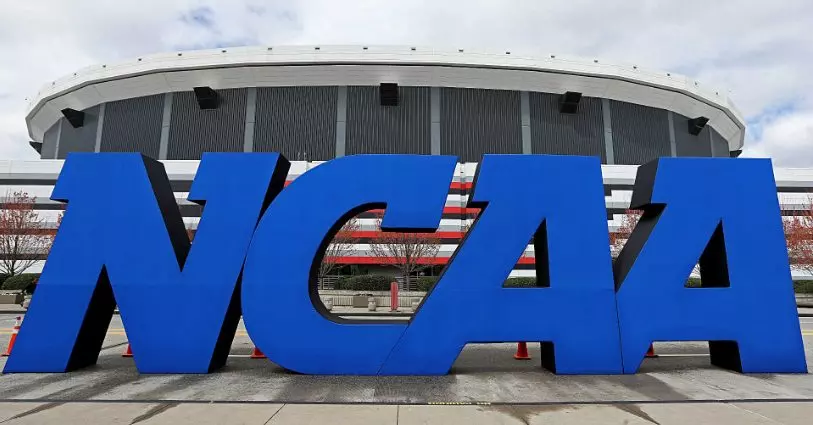Many NCAA sports are proposing different ideas to somewhat alter, speed up or pressurize their games. Two of these sports proposing and instilling new rules are both Men's and Women's Lacrosse.
One of these rules that has been officially changed in NCAA Men's Lacrosse has to do with the faceoff procedure which states:
“During the faceoff procedure, game officials will center the ball five inches from the middle of the head of each faceoff player's stick. The rules proposal aims to make the officiating mechanic clear and consistent for each faceoff and to enhance the fairness of the faceoff play.”
This rule change makes it easier to line up the heads at the faceoff, and create a more even playing field since there is a set distance from the ball. It may not seem like a huge game-changer to players but it is designed to make face off easier for the officials to oversee.
Another rule that has been implemented is one involving timeouts:
“The committee also recommended a proposal that corrects a loophole in the timeout rules. Under the proposal, calling a timeout will also satisfy the clearing rule. Previously, if a team called timeout, the clearing rule remained in effect and the team in possession had 30 seconds to advance the ball into the attack area. It has become a tactic by the team in possession to waste time, particularly late in a game or half, which the committee felt was not in the spirit of the rules.”
The benefit of this rule is that if a coach is to call a timeout while clearing, the 30-second clock to clear will sound. This rule will make it easier for both the coaches and officials to know what situation they are approaching when the timeout is over.
Next, we have the experimental rules that selected conferences are adopting for this season to see in order to see how they affect the pace of the game. The results will determine if the rules will be implemented into the NCAA Men's Lacrosse as a whole. The first experimental rule is designed to create urgency when a team gains possession and allow rewards to teams who push the ball down the field, which is:
“Two-point goals. This experimental rule awards two points if a team scores within 30 seconds of gaining possession. After 30 seconds have elapsed, normal rules will apply. If a team calls a timeout, the offensive team shall not be awarded two points. This experimentation includes a variety of timing options (visible shot clock, etc.).”
The second experimental rule being proposed is designed to see the changed areas that a team's offense can operate and how it will impact stalling and the pace of the game as a whole:
“Restricted offensive area. The committee would like to have a variety of areas (attack area, extended attack area with an arc in the middle of the field, etc.) utilized as an option to see how it impacts offensive play. For this rule, once offensive teams have moved the ball into the restricted offensive area, they would not be allowed to move it back out, thus preventing teams from stalling.”
This experimental rule could completely alter the way lacrosse is played and put a TON of pressure on the offense to perform or lose the ball.
The final of experimental rule states:
“Ten-yard substitution area. The committee would like to study the impact of a smaller substitution box (10 yards), particularly looking at whether more offensive transition opportunities are created with a smaller box.”
Even though they just got rid of this a few years ago, this change allows an increase to place of play.
While there have been many rules proposed and experimented on in Men's Lacrosse, there are also many rule changes that are being applied to Women's NCAA Lacrosse. One implemented rule states:
“Every goal scorer's stick will be checked after each goal. Coaches will still be allowed a maximum of three stick check requests per game. Coaches' requests for stick checks may be asserted during the following time periods: during timeouts, at halftime, before the game, before overtime, and prior to the start of the draw.”
This rule change will help eliminate a lot of the issues that surround the process of stick check requests.
A second rule change requires that a visible 90-second possession clock be in place by the 2017 season for Division I institutions, and by the 2018 season for Division II and Division III institutions. The rule states:
“After a team has gained possession of the ball, a visible 90-second possession clock will start. At the expiration of the 90 seconds, a change of possession will be awarded to the opposing team. The 90-second possession clock will be reset as a result of few occurrences.”
This rule is has been implemented in order to increase the pace of the game, allow for a better balance between offense and defense, and to improve the safety of the game for all players.
Another rule to increase the pace of the game states:
“If a team is leading by 10 or more goals in the last two minutes of the game, the clock is not stopped.”
Before this rule, the clock was stopped for every whistle during the last two minutes of each half, even if a team is leading by 10 or more goals.
The rules have been well received by both NCAA Men's and Women's Lacrosse. There remains a positive outlook on how they will impact the game of lacrosse whether it is for safety, violation or pace-changing reasons.
Photo courtesy of: Sporting News
* Originally published on April 3, 2017, by Nicolette Michalowski







